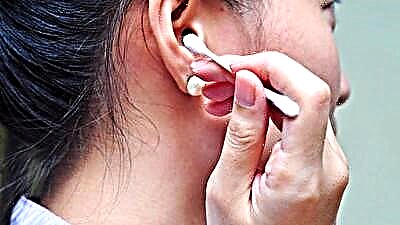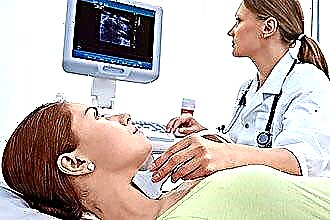Communication with the environment through the respiratory apparatus is one of the most important forms of human activity. The nose, which is the initial part of the respiratory tract, performs a number of functions: transport, protective, warming, moisturizing. The leading role in this process is played by the mucous membranes of the nasal cavity.
The structure and principle of operation of the mucous membrane
 The mucous membrane of the nose covers all surfaces of the cavity, except for the vestibule and the nasopharynx. It consists of the following main layers:
The mucous membrane of the nose covers all surfaces of the cavity, except for the vestibule and the nasopharynx. It consists of the following main layers:
- internal, the basis of which is smooth muscle fibers;
- middle - connective tissue with the inclusion of nodules of the lymphatic system;
- external - epithelial.
The nasal mucosa performs a protective function, binding and removing pathogenic bacteria and foreign particles from the body.
It also conditions and warms the air flow through the nasal cavity. The main tasks assigned to the shell are performed by the epithelium. It does not have blood vessels, metabolism and nutrition occur due to the connective tissue of the middle layer. The epithelium consists of three types of cells:
- Goblet (unicellular glands). Produce mucus, the most important component of nasal secretion.
- The ciliated ones are covered with cilia, which are able to move quickly.
- Intercalated epithelial cells (long and short). They are dislocated between ciliated cells, have microvilli at their apex.
The nasal secretion is produced as follows. Goblet cells accumulate granules of mucinogen, which is able to absorb water. In gradually swelling cells, the mucinogen is converted to mucin, which is the basis of mucus. The swollen cells are in the form of a glass, where mucus is contained in the expanded part, and the nucleus in the narrow one. If the secretion accumulates too much, it is excreted through the decaying top of the cell.
In an inflammatory process, the unicellular glands enlarge and produce a large amount of fluid, which manifests itself in a profuse discharge or a productive (wet) cough.
The daily volume of secretion can be in different conditions from 0.1 to 2 liters. The posterior part of the nasal cavity is renewed every 10-15 minutes.
 On ciliated cells there are 250-300 pairs of cilia 0.3 microns high and about 7 microns long. Each cilium has 9 pairs of microtubules on 2 central microtubules.
On ciliated cells there are 250-300 pairs of cilia 0.3 microns high and about 7 microns long. Each cilium has 9 pairs of microtubules on 2 central microtubules.
The epithelium is covered with mucus 5-10 microns thick, which consists of two layers: thicker mucus and periciliary fluid with low resistance.
The cilia have a strictly directed movement - from the vestibule towards the nasopharynx.
Their flickering (movement) consists of two main phases:
- Shock (effective). The cilia stroke in a straightened state, exert strong pressure on the mucus and force it to move.
- Returnable. The relaxed cilia return to their original position, practically not experiencing resistance from the periciliary fluid.
In a normal state, ciliated cells perform 6-8 strokes per second. The optimum temperature for the normal functioning of the epithelium is 28-33 degrees at a pH level of 5.5-6.5. Drying out, a decrease in temperature below 10 degrees or a pH above 6.5 become the reasons for stopping the oscillations of the cilia. The ciliated epithelium can also be inhibited by medications: anesthetics, intranasal pro-allergenic, antimicrobial, vasoconstrictor drops, topical glucocorticosteroids. Therefore, when using intranasal drugs, especially in children, it is necessary to correlate the positive and negative effects of their use.
Mucosal edema
In the process of performing a protective function, thousands of microorganisms settle on the epithelial integuments every second. Most of them are harmless saprophytes, however, there are also those that, when local immunity is weakened, can cause various diseases. The most common of these is puffiness, which often becomes the basis of more serious ailments.
If the body's defenses decrease, most often, due to hypothermia, there is a rapid multiplication of microbes in the epithelium. Due to the presence of reflexogenic connections between the nasal mucosa and the feet of the legs, it is the hypothermia of the legs that often provokes the disease. Edema can be the result of an allergic reaction followed by the release of histamine, as well as the result of injury.
Edema can provoke the development of such ailments as rhinitis (with the addition of an infection), sinusitis (narrowing of the anastomosis, deterioration of sinus drainage and the development of inflammation) and respiratory diseases, up to pneumonia (as a result of the transition to oral breathing and insufficient warming up and purification of the incoming lungs air flow).
 To relieve puffiness, local and oral agents are used:
To relieve puffiness, local and oral agents are used:
- Decongestant nasal drops based on xylometazoline (Galazolin), naphazoline (Naphtizin), tramazolin (Lazolvan Rino), oxymetazoline (Nazivin). It is undesirable to use them for more than 7 days. The least effective is Naphthyzin, the action of which is short-lived (up to 3 hours), and a side property is the drying out of the shell. The rest of the drugs act more sparingly and for a long time (up to 8 hours).
- Oral decongestants. As a rule, these are combined drugs with a vasoconstrictor, antipyretic and antiallergenic effect, which are used for flu and colds (TeraFlu, Terasil-D, Coldakt). Unlike drops, they can be taken longer.
- Homeopathic remedies and herbal remedies. Of the medicines based on herbal ingredients, the most famous and effective, especially when used systemically, are Pinosol drops (based on pine, eucalyptus and mint oils), as well as Sinupret tablets and drops (based on medicinal herbs). Homeopathy and its effectiveness continue to be a controversial issue among physicians, however, for edema, Cinnabsin, Delufen, Renelle, Euphorbium compositum are most often offered.
Inflammation of the mucous membrane
Inflammation of the mucous membrane is called rhinitis (runny nose), which can be catarrhal or allergic. Sometimes in the cold season, rhinitis can manifest itself as an independent disease, but most often it is one of the signs of a more general disease.
The symptoms of catarrhal (infectious) rhinitis are:
- profuse nasal discharge (clear, yellow, or green);
- severe congestion;
- burning and dryness in the nasal cavity;
- Difficulty nasal breathing.
By the color of the discharge, you can determine the current stage of the disease and the presence of a bacterial infection, a sign of which is the staining of the discharge in yellow or green.
Congestion worsens or completely stops nasal breathing, which leads to oxygen starvation of brain tissue and the appearance of headaches. If catarrhal rhinitis is not treated in time, it can become chronic.
 Allergic rhinitis symptoms:
Allergic rhinitis symptoms:
- clear watery discharge;
- congestion and shortness of breath;
- itching and tickling in the nasal cavity;
- swelling of facial tissues;
- sneezing attacks.
Depending on the allergen, rhinitis can be permanent (reaction to dust, animal dander, perfumes, chemicals) or seasonal (pollen). Most often, an exacerbation of an allergic rhinitis is observed in the spring and summer.
For adequate treatment of infectious rhinitis, it is necessary to know the cause of the onset of the disease.With a viral rhinitis, antiviral agents are prescribed (Viferon, Grippoferon). For bacterial - antibiotics (Protargol, Polidexa, Isofra).
Therapy for allergic rhinitis is excellent. First of all, it is necessary to identify the allergen and eliminate the patient's interaction with it, otherwise the treatment will not bring results. After that, antiallergenic medicines (Zyrtec, Fenistil, Livokab) are taken in the form of drops and sprays. Rinsing with saline or seawater-based preparations is also used.
Drying of mucous membranes
At first glance, it may seem that the problem of dry epithelial cover is not worth special attention, but this is not the case. Drying out of the ciliated epithelium can lead to disruption of the cilia and, as a result, the occurrence of stagnation of secretions in the nose. This threatens the transition of the disease into a chronic form, as well as the development of rhinitis and sinusitis.
There are a number of proven remedies to eliminate dryness in the nasal cavity:
- Saline solutions. The positive effect of isotonic solutions (0.9% sodium chloride) has been proven by numerous clinical trials, there is a thinning of the secretion, moisturizing of the epithelium and restoration of the cilia. The most popular drops and sprays are Dolphin, Humer, AquaMaris.
- Essential oils are best taken by inhalation by dissolving a few drops in water. Known moisturizing and bactericidal effect of fir, mint, eucalyptus oils. It is not recommended to drip directly into the nose to avoid burns.
- Nasal ointments (neutral, no drug) provide an overall moisturizing effect. Pinosol ointment and Oxolinic ointment have proven themselves well.
- When applied regularly, baby oil softens the shell and reduces dryness.
If, when taking intranasal drugs, drying of the epithelium appears, you should change them to alternatives with another active substance, or even stop using them altogether.



